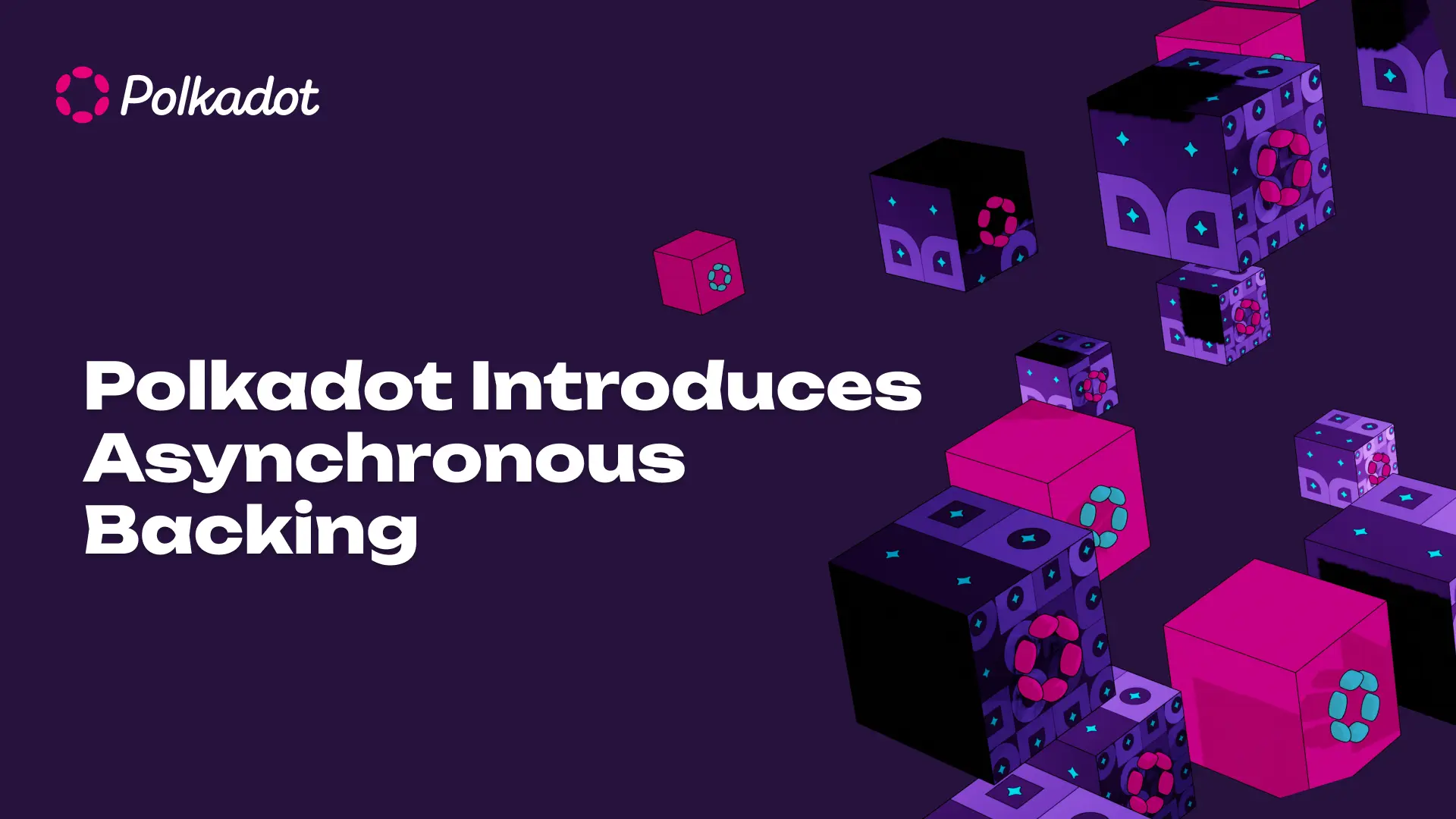Polkadot Introduces Asynchronous Backing, Paving the Way for Polkadot 2.0
Polkadot’s Fellowship has approved the successful implementation of Asynchronous Backing, marking the debut of the first significant advancement in a series of upgrades that will culminate in the much-anticipated Polkadot 2.0.
 By Polkadot•May 10, 2024
By Polkadot•May 10, 2024
Polkadot’s Fellowship has approved the successful implementation of Asynchronous Backing, marking the debut of the first significant advancement in a series of upgrades that will culminate in the much-anticipated Polkadot 2.0. This new feature reduces block time by half, from 12 to just 6 seconds, enabling parallel transaction validation and block production and delivering up to 10x higher throughput for Polkadot's parachain consensus protocol.
“The introduction of Asynchronous Backing opens a myriad of possibilities for decentralized applications requiring rapid transaction processing,” says eskimor, Lead of Parachains at Parity Technologies, the core engineering team of Polkadot. “With features like Agile Coretime and Elastic Scaling on the horizon, Polkadot is setting the stage for a wave of developer-driven innovation."
Why Asynchronous Backing is a Game-Changer
In the realm of blockchain technology, speed and efficiency are paramount. Asynchronous Backing dramatically accelerates transaction confirmation times and expands overall network capacity, which is crucial for improving user interactions and facilitating a variety of applications reliant on fast transactions. Thanks to Polkadot’s unique architecture, the parachains it supports can now take advantage of Asynchronous Backing and double their own block times through an upgrade.
Looking ahead: Polkadot 2.0
The deployment of Asynchronous Backing sets the stage for further transformative upgrades with Polkadot 2.0, which describes a wave of enhancements expected to significantly improve the scalability, cost, speed, and flexibility of the network, and encourage rapid growth of decentralized applications (dapps). A term championed by the Polkadot community, Polkadot 2.0 represents a collection of network advancements: Agile Coretime, Elastic Scaling, and Asynchronous Backing.
Agile Coretime, currently in full testing mode on Kusama, Polkadot’s “canary” network, will come to Polkadot imminently. It revolutionizes the developer onboarding process, making it exceptionally cost-effective and straightforward for newcomers to build on Polkadot. This feature provides developers with on-demand access to cost-effective blockspace by allowing them to access one, multiple, or even partial blockchain computing 'cores'—parallel CPUs that enable different tasks to be run simultaneously for added performance. Like Amazon Web Services (AWS), you can scale cores up or down as needed to meet the compute requirements of your project. Elastic Scaling further refines Polkadot’s core structure, enabling parachains to boost block production and transaction capacity swiftly. This adaptability is vital for handling fluctuating transaction volumes, offering developers a scalable, responsive environment that adjusts resource allocation dynamically according to demand.
"These enhancements, which we are collectively calling Polkadot 2.0, are not just new features; they redefine how blockchains are incubated. From test-running occasional blocks cost-effectively to scaling to high throughput enterprise needs with guaranteed pricing and uptime, Polkadot 2.0 opens new horizons for decentralized applications, making it simpler, safer, and more economical to scale projects as needed,” says Tommi Enenkel, Polkadot educator familiar to his X followers as Alice und Bob and founder of OpenGov.Watch.











